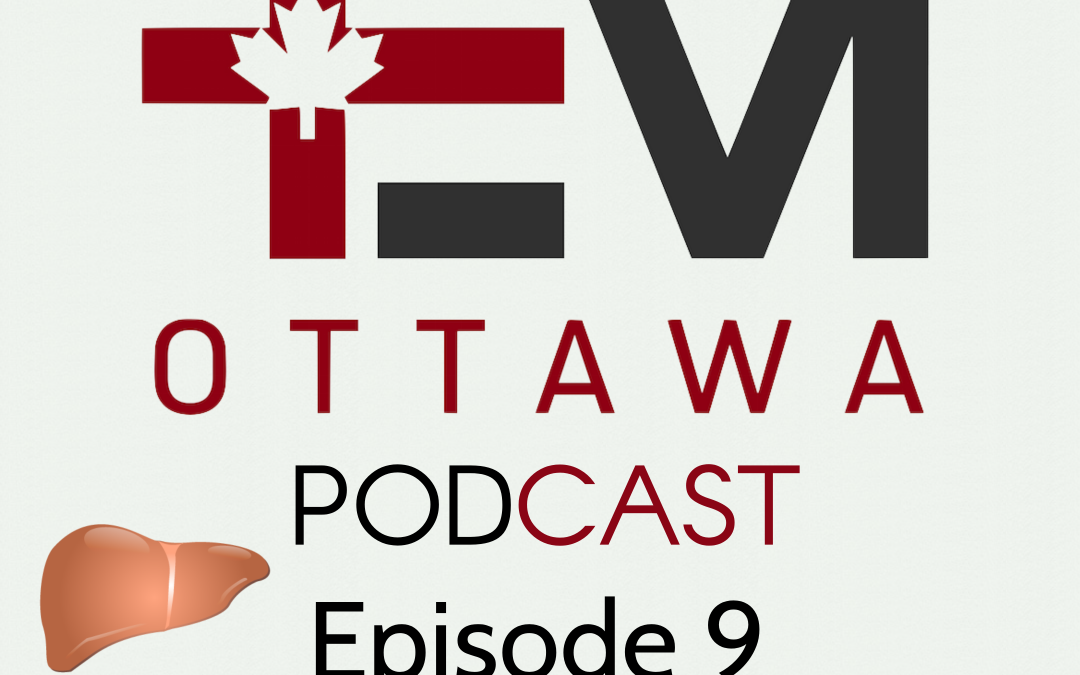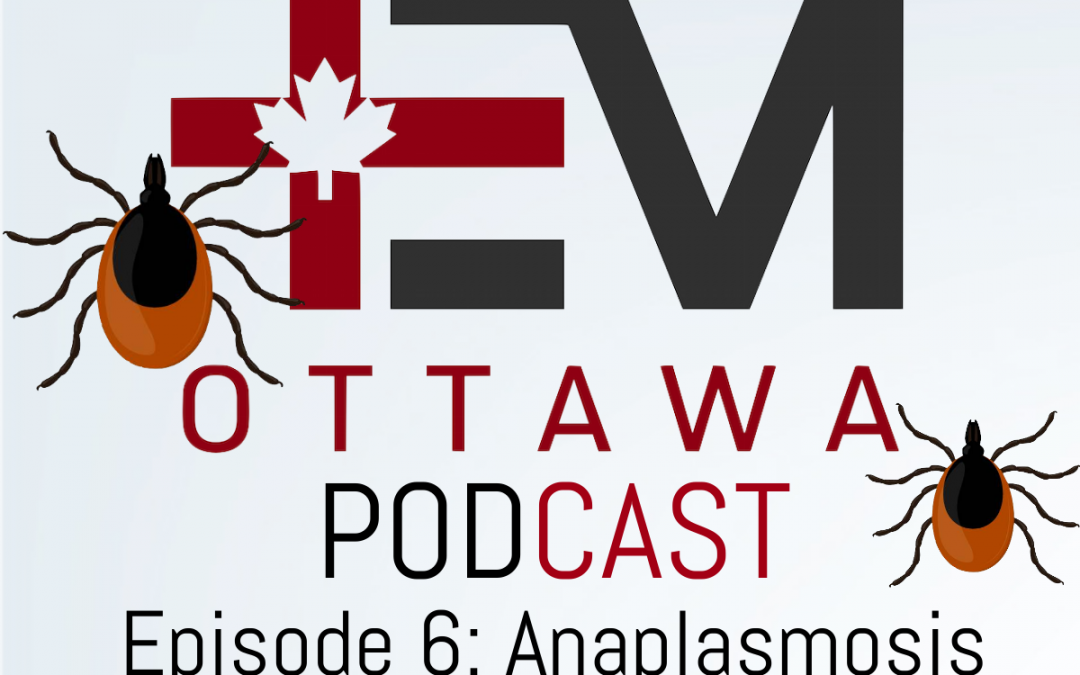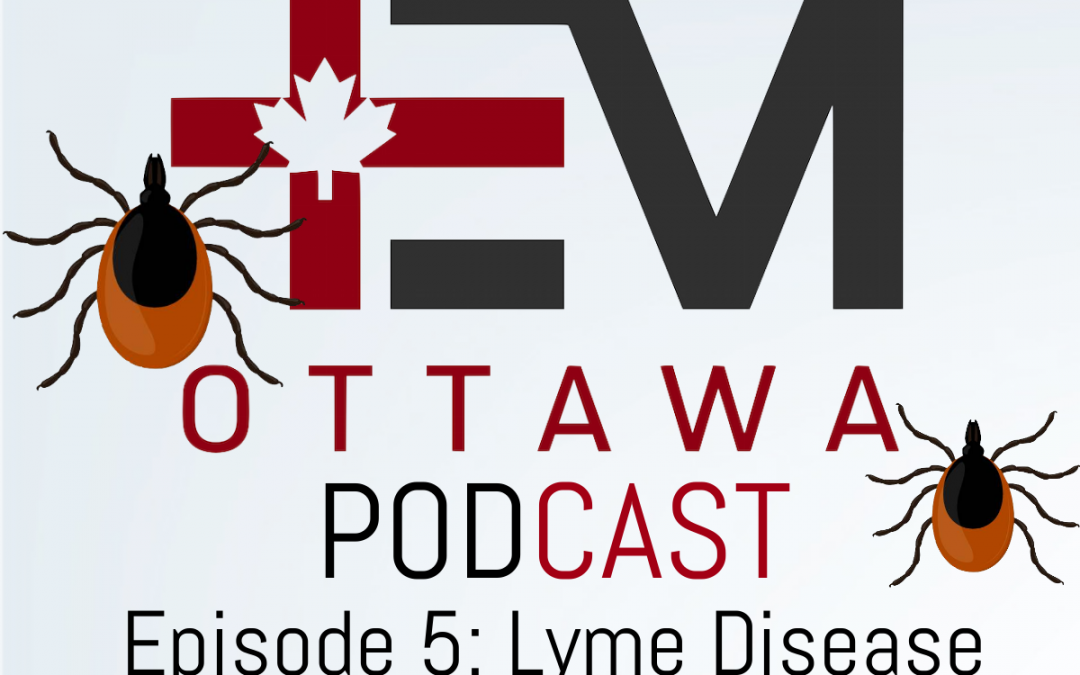
Episode 9: Bacterial Peritonitis – Tap that Belly !
In this episode, Dr. Thavanathan interviews Dr. Chirag Bhat, an R5 and chief resident of the Ottawa Emergency Medicine program (at the time of this podcast), on select complications of cirrhosis.
Note that he’s previously written a Grand Rounds Summary of the topic linked here.
For an even deeper dive, we recommend reviewing the 2018 EASL Clinical Practice Guidelines for the management of patients with decompensated cirrhosis.
Patient Case:
Dr. Bhatt highlights a challenging cirrhotic case that identified knowledge gaps. The patient presented with fever, tachycardia, abdominal pain, and had ascites on clinical examination. He suspected spontaneous bacterial peritonitis (SBP) and performed a paracentesis, and the patient met diagnostic criteria for SBP. He prescribed appropriate antibiotics and consulted internal medicine. But while reviewing the chart the following day he learned that despite this, the patient had decompensated. He was later diagnosed with secondary bacterial peritonitis and required emergent surgery.
Biggest Takeaway from the EASL Guidelines:
Cirrhotic patients can have extensive complications from their liver disease. In the emergency department, we often focus on variceal bleeding and less on SBP. However, SBP has an extremely high mortality and is common. Clinicians should start considering it as the meningitis of the abdomen; in fact, meningitis has a lower mortality rate than SBP. For every four patients that you diagnose with SBP and treat with antibiotics, one will still die in hospital. Of cirrhotic patients, one in four will have at least one episode of SBP during their lifetime. It is both common and deadly.
Diagnosing SBP:
To diagnose SBP, we must do a diagnostic paracentesis and look at the absolute neutrophil count. The paracentesis findings are an ascitic absolute neutrophil count (ANC) of greater than 250 cells/mm.
Is peritonitis needed to diagnose SBP?
No, and in fact this is a common misconception within the name. While we look for fever and abdominal pain, only ½ of patients with SBP present with these symptoms. In fact, fever occurs in only 42% of patients. This is because cirrhotic patients are relatively immunocompromised.
Patients with SBP can present with any of the following:
- Isolated hepatic encephalopathy
- Renal failure
- GI bleeding
- Any abnormal vital signs
- Vomiting
- Metabolic acidosis
- Leukocytosis
One study, which included paracentesis done in outpatient clinics, even found up to 13% of SBP patients were asymptomatic. The fact that something with a mortality of 25% can be that indolent should terrify you.
If you miss this diagnosis and discharge the patient home, their mortality approaches 90%. That’s why it’s a critical diagnosis. Every hour that you delay a diagnostic paracentesis in a patient with SBP increases their mortality by 3.3%. That’s why this is an ED diagnosis, and why you shouldn’t defer doing the paracentesis to the inpatient team.
SBP Treatment:
Antibiotics remain a key component of treatment, specifically, a 3rd generation cephalosporin for community acquired SBP in low antibiotic resistance areas. Without antibiotics, SBP has a mortality of 90%. With antibiotics, the mortality is still 25%.
However, there is another extremely important intervention, that can decrease patient mortality from 25% down to 10%. That treatment is albumin.
The EASL guidelines of 2018 recommend that we give albumin at diagnosis at a dose of 1.5 g/kg. This is a grade I recommendation.
It’s based on the theory that albumin would increase intravascular volume but also binds endotoxins in patients with SBP and ultimately prevent hepatorenal syndrome and subsequent death.
This is based on a meta-analysis of four RCT studies done with a total of 288 patients with SBP.
It suggests that albumin has an NNT of 6 to prevent one death, and it has an NNT of 4 to prevent renal failure. So, this is a second critical action you can take on your next shift. Order albumin at 1.5 g/kg within 6 hours of diagnosis for your patients with SBP and help lower the mortality of this dangerous disease.
What is secondary bacterial peritonitis?
About 1 in 20 cases thought to be spontaneous peritonitis are secondary to another source. In contrast to SBP, secondary bacterial peritonitis is when ascites fluid is infected but it’s due to another intraabdominal infection. It’s secondary to another source, like appendicitis, or cholecystitis, or perforation.
When you do the paracentesis, you’ll still have an absolute neutrophil count > 250 cells/mm3, and you will be tempted to call this spontaneous, when in fact, it is secondary from another source. The reason this matters is that secondary peritonitis is a surgical pathology. Without surgery, their mortality is around 100%. Because we wouldn’t be treating the source
How do you differentiate between SBP and Secondary Bacterial Peritonitis?
Unfortunately, this remains a challenge. There’s not much on history that will differentiate between the two. However, on physical exam, secondary bacterial peritonitis patients tend to have more severe and focal abdominal pain.
Is there a clinical tool that can help distinguish between the two?
The Runyon criteria
When you do the paracentesis, you’re looking for 2 of 3 findings in the ascitic fluid:
- Protein > 10 g/L
- Glucose < 2.8 mmol/L
- LDH > ULN of the serum.
These criteria have a specificity of 90%, but a sensitivity of 66% for secondary bacterial peritonitis. So, as emergency physicians, we can’t use Runyon criteria to rule out secondary peritonitis. However, applying the Runyon criteria can push you to do a CT when you weren’t going for other reasons.
Advanced Imaging
Dr. Bhatt highlights a few reasons you should strongly consider performing a CT scan on a patient with cirrhosis and ascites.
- Severe abdominal pain
- Focal abdominal pain
- Positive Runyon criteria
- Not responding to typical SBP treatment, including antibiotics and albumin
- Also consider a very high ANC as a clue.
Take-home Points:
-
Adopt an extremely low threshold to perform a diagnostic paracentesis in cirrhotic patients. It has an extremely high mortality with a very subtle presentation.
- The paracentesis findings are an ascitic absolute neutrophil count (ANC) of greater than 250 cells/mm.
- Only half of SBP patients present with fever and abdominal pain. SBP can present with isolated hepatic encephalopathy, renal failure, GI bleeding, any abnormal vital sign, vomiting, metabolic acidosis or leukocytosis.
- For SBP treatment, in addition to antibiotics, prescribe albumin at a dose of 1.5 mg/kg as per the latest 2018 EASL guidelines. This is a grade I recommendation.
- When diagnosing SBP also consider secondary bacterial peritonitis, which occurs in 1 in 20 patients. This is a surgical emergency of the abdomen. Have a low threshold for advanced imaging, particularly in patients with severe or focal abdominal pain, those with meeting Runyon criteria, and patients not responding to treatment as expected.




